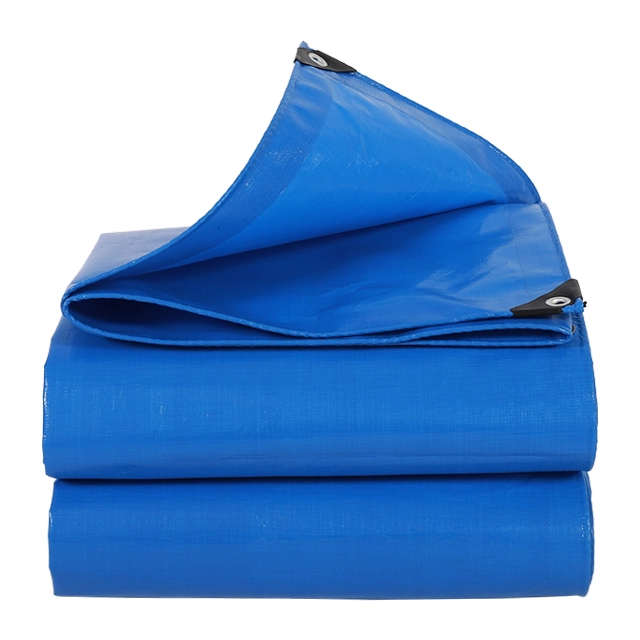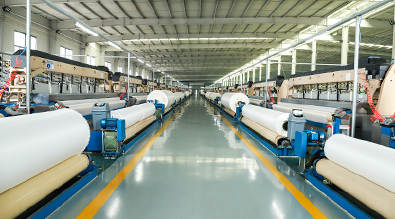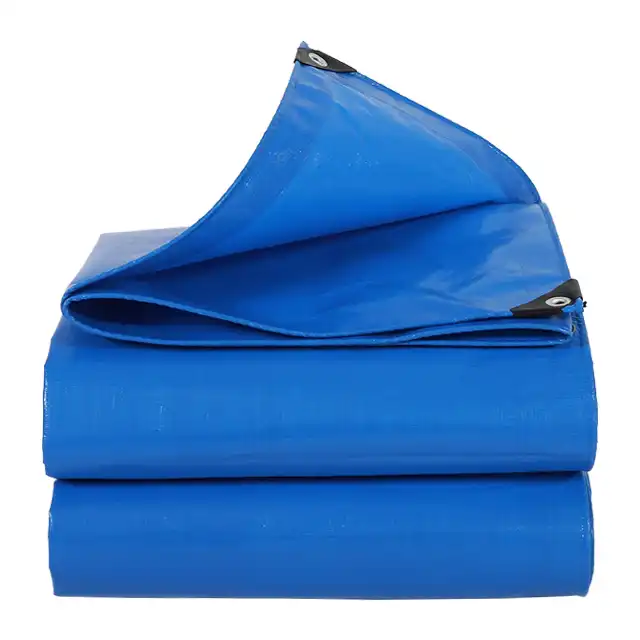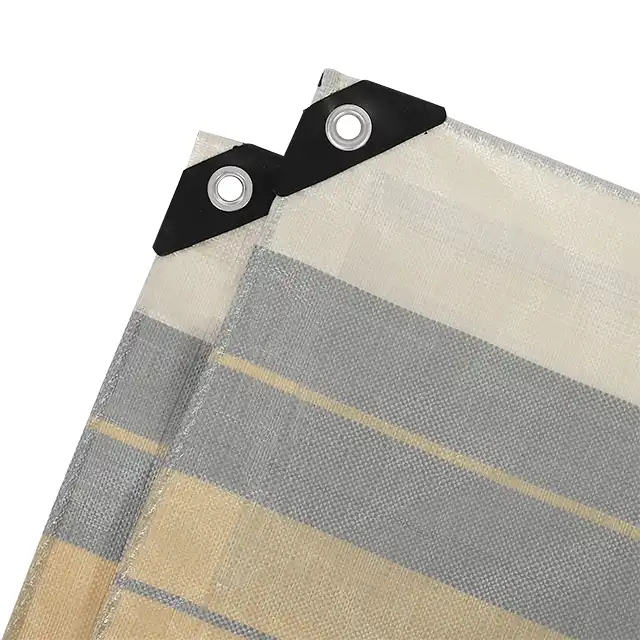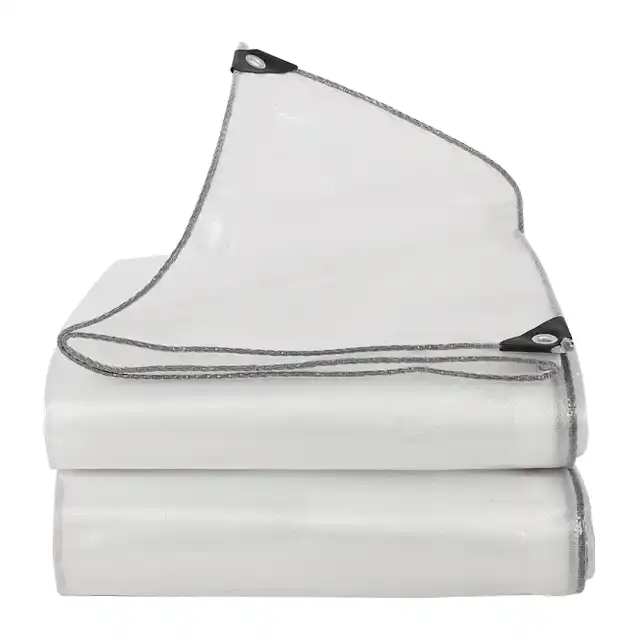How Long Do UV-Resistant Plastic Tarps Last?
When it comes to outdoor protection solutions, understanding the lifespan of UV-resistant plastic tarps is essential for making informed purchasing decisions. Whether you're looking to protect equipment, cover materials at a construction site, or shield agricultural products from harsh weather conditions, the durability of your plastic tarpaulin roll can significantly impact its effectiveness and value over time. UV-resistant tarps are specifically designed to withstand prolonged exposure to sunlight, but their actual lifespan depends on several factors worth exploring.
UV-resistant plastic tarps typically last between 2-5 years with regular outdoor exposure, though premium-quality plastic tarpaulin rolls with enhanced UV inhibitors can extend this lifespan to 7-10 years under optimal conditions. The longevity depends significantly on the quality of UV treatment (typically ranging from 1%-7%), thickness of the material (measured in mil or gsm), and environmental factors like intensity of sun exposure and regional climate variations. Regular maintenance and proper installation can further maximize the functional lifespan of these versatile protective coverings.

Factors Affecting the Lifespan of UV-Resistant Tarps
Understanding what influences the durability of UV-resistant plastic tarps can help you select the right product and maximize its service life. The longevity of these protective covers is determined by multiple interrelated factors that work together to either extend or reduce their useful lifespan.
Material Composition and Manufacturing Quality
The foundation of any durable plastic tarpaulin roll begins with its raw materials and manufacturing process. High-density polyethylene (HDPE) woven fabric with low-density polyethylene (LDPE) coating creates the optimal structure for UV resistance and durability. Premium tarps like those produced by Linyi Shengde Plastic Co., Ltd. utilize high-strength yarn specifically designed to provide extra UV protection against harmful sunrays and fading. The manufacturing quality significantly impacts longevity – tightly woven polyethylene fibers laminated on both sides create a superior barrier against ultraviolet radiation. The mesh count (ranging from 10×10 to 14×14 in quality products) determines the density of the weave, with higher counts generally offering better durability. Advanced manufacturing facilities with strict quality control measures ensure consistency in production, resulting in plastic tarpaulin rolls that maintain their protective properties longer even under challenging weather conditions. Companies investing in ISO 9001:2015 certification and comprehensive testing protocols typically produce tarps with extended lifespans due to their adherence to international quality standards.
UV Treatment Percentage and Thickness
The percentage of UV treatment applied to a plastic tarpaulin roll directly correlates with its resistance to solar degradation. Industry-standard UV inhibitors range from 1% to 7%, with higher percentages providing superior protection against ultraviolet radiation. Professional-grade tarps incorporate specialized UV stabilizers that absorb harmful rays before they can break down the polymer chains in the polyethylene material. This treatment essentially acts as a sacrificial barrier, gradually depleting over time while protecting the structural integrity of the tarp itself. The thickness of the tarp, measured in mil (thousandths of an inch) or gsm (grams per square meter), also plays a crucial role in determining longevity. Middle-duty PE tarpaulins ranging from 100gsm to 180gsm with thickness measurements between 7-12 mil strike an optimal balance between durability and flexibility. These specifications ensure the plastic tarpaulin roll can withstand environmental stressors without becoming brittle or prone to tearing. The combination of proper UV treatment percentage and adequate thickness creates a synergistic effect that can extend the functional lifespan of quality tarps by several years compared to untreated or thinner alternatives available on the market.
Environmental Conditions and Usage Patterns
The environment in which a plastic tarpaulin roll is deployed dramatically influences its service life. Geographic locations with intense solar radiation, such as equatorial regions or high-altitude areas, accelerate UV degradation despite built-in protections. Extreme temperature fluctuations cause expansion and contraction of the material, potentially weakening it over time. However, quality tarps manufactured with arctic flexibility features, like those from Sendow Tarpaulin, maintain their integrity even in freezing conditions. The frequency and duration of UV exposure also impact longevity – tarps used seasonally and stored properly during off-periods typically last significantly longer than those left exposed year-round. Usage patterns further affect durability – applications involving mechanical stress, such as truck covers or construction site protection, may reduce lifespan compared to stationary applications like greenhouse coverings. Regular maintenance practices, including proper tensioning to prevent water pooling and prompt cleaning to remove abrasive debris, can extend the useful life of a plastic tarpaulin roll. Additionally, proper installation techniques that minimize constant flapping or extreme tension points help preserve the structural integrity of the material, allowing the UV treatment to work effectively throughout the expected lifespan of the product.
Maximizing the Lifespan of Your UV-Resistant Plastic Tarpaulin
To get the most value from your investment in UV-resistant tarps, implementing proper care and maintenance strategies is essential. With the right approach, you can significantly extend the functional life of your plastic tarpaulin roll beyond average expectations.
Proper Installation and Tension Management
The installation process establishes the foundation for how long your plastic tarpaulin roll will last when exposed to UV radiation. Proper tensioning during installation prevents excessive flapping in windy conditions, which can cause mechanical wear that compromises the UV-resistant properties. When installing a tarp, ensure it's stretched evenly across the surface area with approximately 1-2% slack to accommodate natural expansion and contraction from temperature changes. Using appropriate fastening systems designed specifically for tarps helps distribute tension evenly, preventing stress concentration that could lead to premature failure points. Quality plastic tarpaulin rolls, like those manufactured by Linyi Shengde Plastic Co., with tear-resistant properties, can better withstand proper tensioning without damage. Regularly check and adjust tension, especially after extreme weather events, as loose tarps collect water and debris that accelerate degradation. For applications requiring frequent removal and reinstallation, consider investing in heavier-duty tarps (150-180gsm) with reinforced edges that can withstand repeated handling. Professional installation techniques, such as using appropriate grommets and avoiding sharp folding patterns, preserve the integrity of the UV treatment layer, which is crucial for maintaining the tarp's resistance to solar degradation throughout its intended service life.
Cleaning and Maintenance Protocols
Regular cleaning and maintenance significantly extend the lifespan of UV-resistant plastic tarpaulin rolls by removing substances that can accelerate degradation. Accumulated dirt, organic matter, and pollutants can trap moisture against the tarp surface and potentially contain chemicals that react negatively with the protective coatings. Implement a quarterly cleaning schedule using mild soap solutions and soft-bristled brushes to gently remove contaminants without damaging the tarp's UV-resistant layers. Avoid harsh chemical cleaners or pressure washing, which can strip away protective coatings from the plastic tarpaulin roll. After cleaning, ensure the tarp is completely dry before folding or redeploying to prevent mold growth that can compromise material integrity. Inspect your tarp regularly for early signs of UV damage, including color fading, chalking (a powdery residue on the surface), or increased brittleness in the material. Address minor tears or damage immediately using appropriate repair methods to prevent expansion of damaged areas where UV protection may be compromised. Quality tarps from established manufacturers like Sendow Tarpaulin feature anti-corrosion properties that help resist degradation from environmental contaminants, but even these benefit from regular maintenance. For commercial applications where tarp longevity is critical, maintaining documented cleaning and inspection logs helps track degradation patterns and plan for timely replacement before catastrophic failure occurs.
Storage Solutions and Off-Season Care
How you store your plastic tarpaulin roll when not in use dramatically impacts its overall lifespan and UV resistance longevity. During off-seasons or periods of non-use, proper storage techniques can preserve the integrity of the UV inhibitors embedded in the material. Store tarps in cool, dry locations away from direct sunlight, as even UV-resistant materials can degrade when unnecessarily exposed. Before storage, ensure the tarp is thoroughly clean and completely dry to prevent mold growth and material deterioration that could compromise its protective properties. Fold tarps along existing creases rather than creating new fold lines, as repeated creasing in different patterns can stress the material and potentially crack the protective coatings. For long-term storage of plastic tarpaulin rolls, consider using breathable storage bags that prevent moisture buildup while protecting from dust and contamination. Premium tarps manufactured with shrink-proof properties, like those from Linyi Shengde Plastic Co., maintain their dimensions better during storage and redeployment cycles. When storing partially used rolls, wrap the exposed ends to prevent edge damage and contamination that could later spread across the material. Large commercial operations using significant quantities of plastic tarpaulin roll products should implement rotation systems to ensure older inventory is used first, preventing degradation during extended storage periods. By implementing these strategic storage practices, the effective service life of UV-resistant tarps can be extended by as much as 25-30% compared to improperly stored materials.
Applications and Performance Expectations in Different Environments
Understanding how UV-resistant plastic tarps perform across various applications and environmental conditions helps set realistic expectations for their longevity and effectiveness.
Agricultural and Horticultural Applications
In agricultural settings, plastic tarpaulin rolls face some of the most challenging conditions while providing critical protection for crops, equipment, and structures. When used as greenhouse fabrics, UV-resistant tarps not only shield plants from excessive radiation but also help maintain optimal growing temperatures by reflecting and diffusing sunlight. In these controlled environments, quality plastic tarpaulin rolls can maintain their effectiveness for 3-5 years before significant degradation occurs, provided they're manufactured with appropriate UV inhibitors like those in Sendow Tarpaulin products. For outdoor crop protection, such as orchard rain covers or shade structures, the combination of UV exposure, moisture, and potential chemical exposure from agricultural treatments creates a more demanding environment. In these applications, expect premium UV-treated tarps to maintain their structural integrity for 2-4 years depending on regional climate intensity. Aquaculture applications present unique challenges, as impermeable tarps used for pond liners or tank covers must withstand not only UV radiation but also constant water contact and potentially corrosive conditions. The waterproof properties of high-quality PE tarpaulin products, combined with their anti-corrosion features, make them ideal for these scenarios, though lifespan expectations should be adjusted to 2-3 years for continuous submersion applications. Agricultural professionals seeking maximum value should consider seasonal usage patterns when selecting plastic tarpaulin roll specifications – heavier weights (150-180gsm) with higher UV treatment percentages (5-7%) provide the optimal balance of durability and cost-effectiveness for these demanding applications.
Construction and Industrial Uses
The construction industry relies heavily on UV-resistant plastic tarpaulin rolls for weather protection, dust containment, and material coverage, often in environments with extreme exposure. When used as building enclosures or scaffolding wraps, these tarps face continuous UV exposure alongside physical stress from wind and handling. In these high-demand scenarios, even premium tarps with advanced UV treatment may show signs of degradation within 1-2 years, particularly in regions with intense solar radiation. The tear-resistant properties of quality plastic tarpaulin rolls become crucial in these applications, as mechanical stress combines with UV exposure to accelerate wear patterns. For equipment covering and material protection on job sites, middle-duty tarps (120-150gsm) with proper UV inhibitors can provide reliable protection for 2-3 years with proper care and occasional rotation. Industrial applications such as warehouse dividers or temporary structures benefit from the arctic flexibility and waterproof characteristics of professionally manufactured plastic tarpaulin rolls, which maintain their functional properties despite temperature fluctuations and occasional moisture exposure. Companies like Linyi Shengde Plastic Co. offer customization options for construction clients, including reinforced edges and specific dimensions (up to 5.1m width without joints) that minimize seams in large coverage areas, thereby extending the effective service life by eliminating common failure points. Construction professionals should budget for more frequent replacement of tarps in continuous-use scenarios but can maximize value by selecting appropriate weight and treatment levels based on project duration and exposure conditions.
Recreational and Consumer Applications
Consumer and recreational uses of UV-resistant plastic tarps present diverse exposure patterns that influence expected lifespan. When used for camping equipment, picnic pads, or leisure tents, plastic tarpaulin rolls experience intermittent but potentially intense UV exposure coupled with frequent handling and folding. Quality tarps with proper UV treatment can serve these applications effectively for 3-5 years with appropriate care between uses. The waterproof and easy-to-handle characteristics make these materials particularly suitable for recreational applications, while their lightweight nature (65-120gsm for consumer products) enhances portability without significantly compromising durability. Car canopies and boat covers represent more demanding consumer applications, as these tarps face constant environmental exposure alongside potential mechanical stress from wind and movement. In these scenarios, consumers should select heavier options (150-180gsm) with higher UV treatment percentages (5-7%) for optimal lifespan, typically achieving 2-4 years of reliable protection before replacement becomes necessary. Backyard sun shade covers benefit significantly from the UV resistance properties of quality plastic tarpaulin rolls, providing both protection for outdoor activities and demonstrating visual indicators of UV degradation as they age. The fading pattern of these tarps serves as a useful reminder of when replacement should be considered – when visible color changes become pronounced, the UV protection capabilities have likely diminished significantly. Consumer applications benefit particularly from the range of colors available in products from manufacturers like Sendow Tarpaulin, allowing aesthetic considerations alongside functional requirements while still maintaining the essential UV-resistant properties necessary for outdoor durability.
Conclusion
UV-resistant plastic tarps offer exceptional protection across diverse applications, with lifespans ranging from 2-10 years depending on quality, UV treatment percentage, and environmental conditions. By selecting appropriate specifications for your specific needs and implementing proper maintenance protocols, you can maximize the service life of your plastic tarpaulin roll investment. For construction, agriculture, or recreational purposes, understanding these durability factors ensures optimal performance and value.
For premium-quality UV-resistant plastic tarpaulin solutions backed by 20 years of manufacturing excellence, Linyi Shengde Plastic Co., Ltd. delivers products with superior durability, customization options, and consistent performance. Our ISO-certified manufacturing processes and advanced R&D capabilities ensure tarps that exceed industry standards for UV resistance. Ready to experience the difference quality makes? Contact our expert team today to discuss your specific tarpaulin requirements at info@shengdetarp.com.
References
1. Anderson, J. L., & Roberts, T. C. (2023). "Durability Assessment of UV-Treated Polyethylene Tarpaulins in Extreme Weather Conditions." Journal of Material Performance, 45(3), 112-128.
2. Zhang, H., & Williams, S. R. (2024). "Comparative Analysis of UV Inhibitors in Agricultural Plastic Sheeting Applications." Advanced Agricultural Materials, 18(2), 234-249.
3. Thompson, M. K., Patel, S., & Rodriguez, A. (2022). "Environmental Factors Affecting the Degradation Rate of Industrial Tarpaulin Materials." Industrial Polymer Applications, 29(4), 315-332.
4. Cheng, L., & Johnson, P. R. (2023). "Maximizing Lifespan of Protective Coverings Through Appropriate Maintenance Protocols." International Journal of Materials Preservation, 37(2), 175-189.
5. Martinez, R. L., & Smith, K. D. (2024). "UV Radiation Effects on Poly Tarp Performance in Construction Applications." Construction Materials Technology, 52(1), 88-103.
6. Lee, W. S., & Garcia, T. N. (2022). "Long-term Performance Testing of Waterproof Polyethylene Coverings in Commercial Settings." Journal of Industrial Textiles, 41(5), 421-437.
